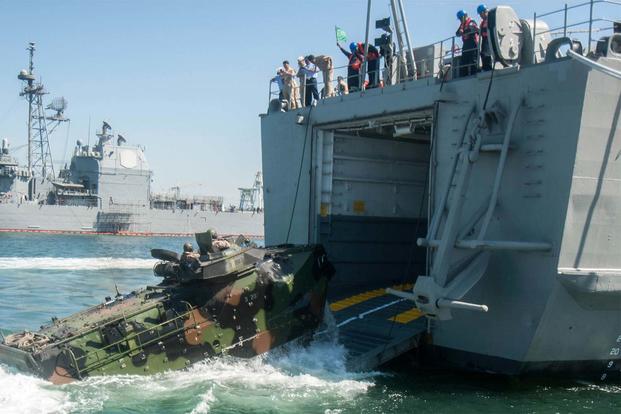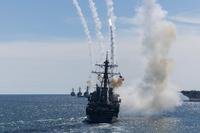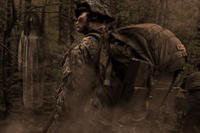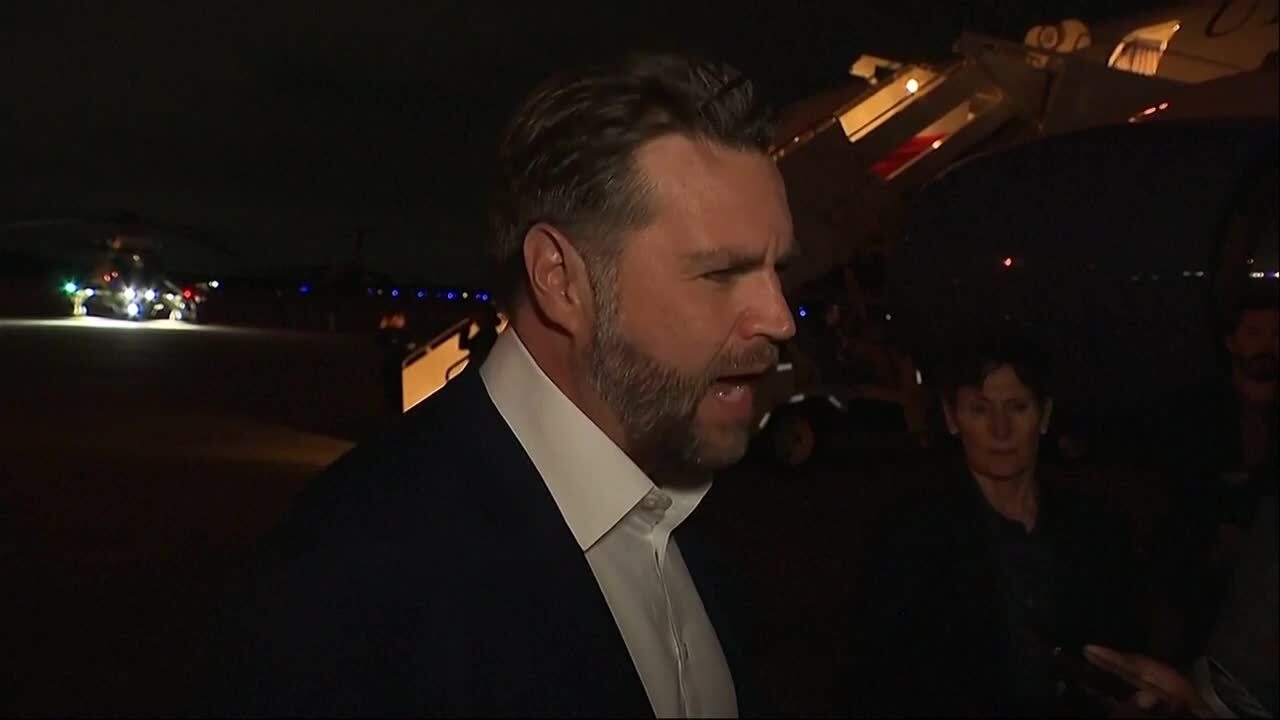Thousands of U.S. Marines at the biennial Rim of the Pacific, or "RIMPAC," exercises in Hawaii and southern California are passing on hard-earned lessons to partner nation troops on the most complex of military maneuvers -- the amphibious landing.
"We've really been stressing that this is a two-way street" in working with troops from Canada, Mexico, Chile, Australia, Japan, South Korea, Malaysia, Indonesia, New Zealand, Tonga and others in and off Hawaii and California, said Marine Brig. Gen. Raymond Descheneaux, commander of Fleet Marine forces for the exercise known in Pentagon parlance as RIMPAC 16.
"We start with completely integrating those [partner] forces, making sure they're embedded from start to finish in everything we're doing from command and control down to the most junior members of the team," Descheneaux said in an interview from Hawaii last week.
"The nations participating brought some strong impressive talent to join our ranks" in the exercises, which run through Aug. 4 and involve 45 ships, 5 submarines, more than 200 aircraft and 25,000 personnel from 27 countries, said Descheneaux, the assistant deputy commandant for aviation (mobilization) of the Marine Corps and a career aviator with 319 combat missions in Iraq and Afghanistan, mainly in the AH-1 Cobra attack helicopter.
Amphibious landings have been called the most difficult and complex of military operations, requiring "an intricate coordination of numerous military specialties, including air power and naval power, naval gunfire, naval transport, logistical planning, specialized equipment, land warfare tactics and extensive training in the nuances of this maneuver for all personnel involved," according to a Center for Strategic and International Studies report last month: "Landing Together -- Pacific Amphibious Development and Implications for the U.S. Fleet."
"In the long term, the United States may be able to share the amphibious burden with close allies in the region for training and crisis response," the CSIS report said. "However, in the near-term to mid-term, it is likely that U.S. Navy and Marine Corps engagements with these partners and allies will increase -- in terms of frequency and complexity -- in the Asia-Pacific as partners and allies expand their amphibious capabilities."
Stressing Interoperability
Descheneaux said the main goal of the Marines at RIMPAC was simply to enhance the ability to work together, or interoperability, in future amphibious operations for humanitarian and disaster relief, and in case of conflict.
The interoperability was demonstrated earlier this month by the successful first-time landing of a Marine MV-22 tilt-rotor Osprey aircraft aboard one of the new Royal Australian Navy amphibious assault (LHD) ships. A Marine MV-22B touched down six times on the flight deck of the HMAS Canberra on July 12.
"This was a very significant event, showing the diversity of the platform [the Osprey], what it is capable of doing," Descheneaux said. "It was a great thing for both nations" in improving the ability to interact "in the case of the next tsunami or the next humanitarian incident out in the Pacific," he said.
That interoperability had to be employed in an emergency situation last Friday when a small civilian plane went down off the Kona coast of Hawaii's Big Island. A Royal New Zealand Air Force P3K2 Orion joined in the search for the two survivors, along with a U.S. Navy MH-60R Sea Hawk helicopter from the guided missile destroyer USS Chung-Hoon, and an Air Force HC-130 Hercules from the 353rd Special Operations Group, based at Kadena Air Base, Japan.
Once the survivors, David McMahon and Sydnie Uemoto, were located swimming about a mile-and-a-half offshore, a Coast Guard MH-65 Dolphin helicopter crew safely hoisted them aboard and they were reported to be recovering with minor injuries.
"An important part of being a mariner is ensuring safety of life at sea," said Cmdr. Tom Ogden, commander of the Chung-Hoon. "No matter if you are a U.S. destroyer, Coast Guard pilot, or a canoe paddler, you must always be ready to provide assistance," Ogden said in a Navy news release.
Russia Shadows Exercise
China has five ships at RIMPAC, led by the guided missile destroyer Xi'an. The Chinese are participating in numerous exercises, including a submarine rescue drill, but they will not be part of the amphibious operations, Descheneaux said. "We will not be working with them in this particular environment here," he said.
Russia is not a participant in RIMPAC but has at least two ships shadowing the exercises. Over last weekend, the Russian Udaloy-class destroyer Admiral Vinogradov followed the Navy's newest amphibious assault ship, the America (LHA-6), generally staying about two nautical miles away but at times closing to within 1,000 yards, according to a U.S. Naval Institute report.
Though the Russian ship at times had its bow pointed directly at the America and was closing in, Capt. Michael Baze, the America's commander, said the Russian commander had acted professionally and was "definitely doing a really good job maneuvering the ship" at such close proximity, USNI reported.
"The fact is that this Udaloy is here, he's in international waters -- like we are -- and so he's enjoying the coast of Hawaii -- like we are -- but we're all acting like professional mariners and it's safe," Baze was quoted as saying.
The America was serving as the amphibious task force command and control platform for RIMPAC, with more than 800 Marines from the 3rd Marine Regiment aboard.
In a blog posting, Baze said that rotary-wing and tilt-rotor Navy and Marine Corps aircraft, as well as multiple aircraft from other RIMPAC participant nations, will operate with USS America during the exercises, culminating with an amphibious landing and live-fire exercise at the Army's Pohakuloa Training Area on Hawaii on July 30.
The landings will involve LCACs (Landing Craft Air Cushioned) and other amphibious vehicles, but those will not come from the America. Baze described the America as "an aviation-centric platform." It has no well deck, and was built for the MV-22 Osprey and the F-35 Joint Strike Fighter as part of a new concept for amphibious warfare, although no F-35s will participate in RIMPAC, Descheneaux said.
The America was "designed with the F-35 and the V-22 in mind," he said. "It's a whole different way in which we operate. We want to get behind the enemy, get around the enemy, use that F-35 to provide a lane to allow us to get in for a period of time, and then get out."
-- Richard Sisk can be reached at Richard.Sisk@Military.com.





























